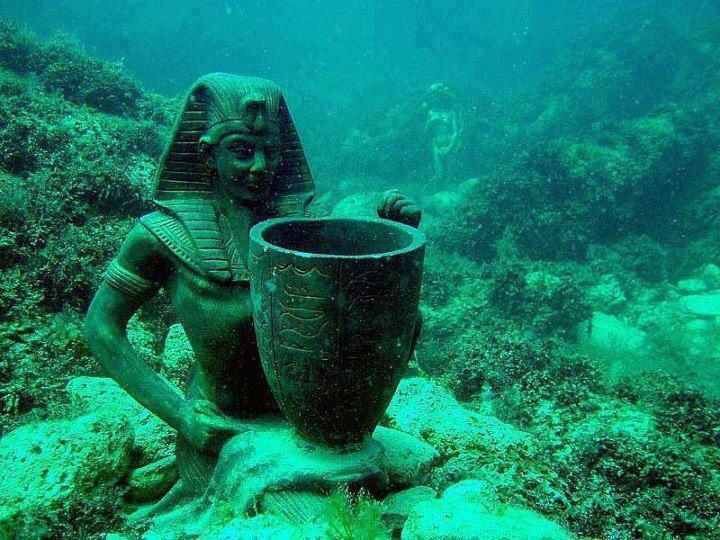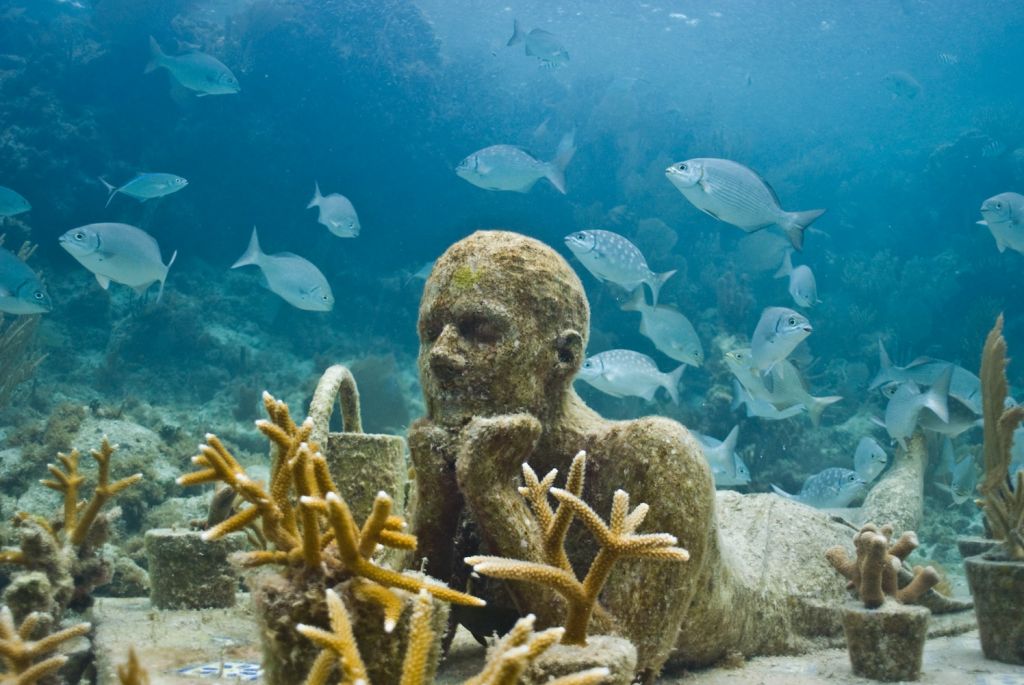Share




Since ancient times, life underwater has captured human imagination; endless stories, old and new, of underwater cities and creatures with their own narratives have been told. Who among us has not heard stories like that of the submerged city of Atlantis, the inhabitants of which used advanced technologies and weapons, or stories of sailors about mermaids that called them by name and dragged them to the bottom of the ocean. Some of these stories were adapted in live or animation movies that imagined and tackled this mythical world.
The entire Earth has been effected as humanity evolved; even outer space has not escaped human tampering and the massive pollution caused by the industrial revolution as of the beginning of the twentieth century. The impact on the seas has led to the destruction of vast areas of coral reefs, negatively affecting marine life. Luckily, some attributes of human civilization can contribute to redressing coral reefs, by serving as artificial reefs that encourage coral growth, and ultimately promote marine biodiversity. A case in point are submerged cities and sunken ships, which also serve as underwater museums.
The Arab Republic of Egypt is rich with such sites. For example, the city of Heracleion—located around 2.5 kilometers from Abu-Qir Bay—encompasses remains of palaces, as well as several unique statues that feature a combination of ancient Egyptian and Ptolemaic sculpture styles. The United Nations Educational, Scientific, and Cultural Organization (UNESCO), in collaboration with several institutions in Alexandria, is planning to establish a large museum to showcase these monuments to the public, diving enthusiasts, and researchers. Also, there is the shipwreck site of Thistlegorm, sunk by German forces during World War II, near Ras Mohamed, Egypt. The site is among the world's best diving spots, and hosts a wide variety of marine creatures, such as the bat fish, barracuda fish, and grouper.

As interest in preserving the marine environment has grown, many researchers and artists have conducted studies on the use of environmentally-friendly materials for constructing more of these hard surfaces under water for coral reefs to grow on. Now, let us review some of the Museums established under the sea around the world.
Half Moon Beach Museum (Kingdom of Saudi Arabia)
A team of divers in the Eastern Province of Saudi Arabia established the first museum for the landmarks of Arab Gulf States, under the water of the Half Moon Beach, in Dammam. During their dive, visitors can see replicas of Al Faisaliyah Center and Kingdom Centre in Riyadh, the capital of KSA; as well as the Kuwaiti Towers, the Bahraini World Trade Center, and Burj Khalifa of the United Arab Emirates. In addition to serving as a touristic attraction, the Museum also contains fish-attracting pieces, aiming to revive marine life deteriorated due to the scarcity of coral reefs.
Cancún Underwater Museum (Mexico)
On Isla Mujeres, near the coast of the Mexican city of Cancún on the Caribbean Sea, British sculptor Jason deCaires Taylor, in collaboration with five other sculptors from Mexico, built an underwater museum, to be the first of its kind in the world. The Museum manifests a special interaction between art and the natural sciences. Known as Cancún Underwater Museum, it was established over the course of around four years, 2009-2013. The Museum comprises three blocks, two of which are submerged and contain 500 statues.
The idea of establishing this Museum originated with Jaime González Cano, Director of the Cancun National Marine Park, when he noticed the deterioration of the Manchones Reef—the largest in Cancún, Mexico—due to the high demand for tourists and divers to visit it. The main purpose of establishing the Museum was promoting the growth of coral reefs. The statues were sculpted from a special type of cement with a pH degree that encourages the growth of corals and attracts algae and various marine species over time.

Photo soucre.
Museo Atlántico (Spain)
Museo Atlántico is the first underwater museum in Europe, located at Lanzarote Island in Spain, off the coast of Bahía de Las Colorados. The Museum, inaugurated in 2017 after three years of construction, comprises more than 300 life-size statues. Museo Atlántico consists of twelve big blocks under water, also designed by the British sculptor Jason deCaires, representing his biggest project.
Divers can tour the underwater museum and admire the sculptures placed at a depth of around ten meters at the bottom of the sea. The statues were sculpted from pH-neutral materials to withstand for hundreds of years as artificial reefs where marine life thrives. In addition to the role Museo Atlántico plays in raising environmental awareness and placing marine life issues under the spotlight, some of its sculptures also shed light on the crisis of refugees and the displaced in Europe, with scenes of children rowing on fishing boats in search of hope. It is expected for the Museum to serve as a park and a living station for octopuses, sea urchins, and fish.
************************
Human civilization and artistic creations cast their good shadows under the sea. They carry glimpses of the human history and culture, reflect the scientist's and artist's sense of responsibility towards the environment, and give hope to various forms of marine life and to the future of the planet.
*Cover photo, Museo Atlántico, source.